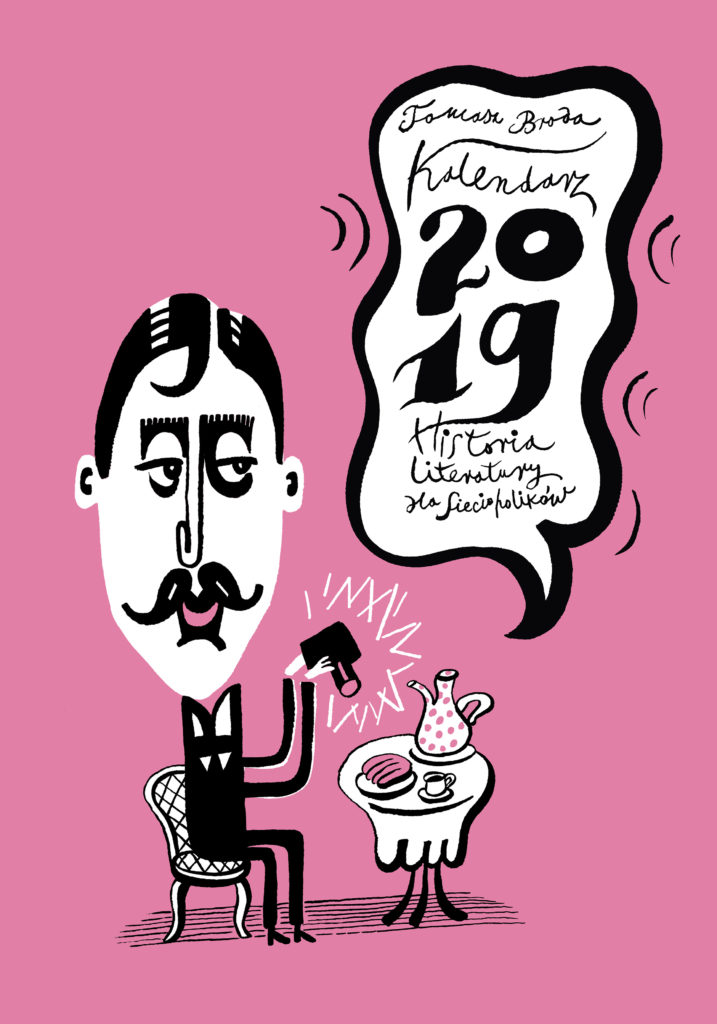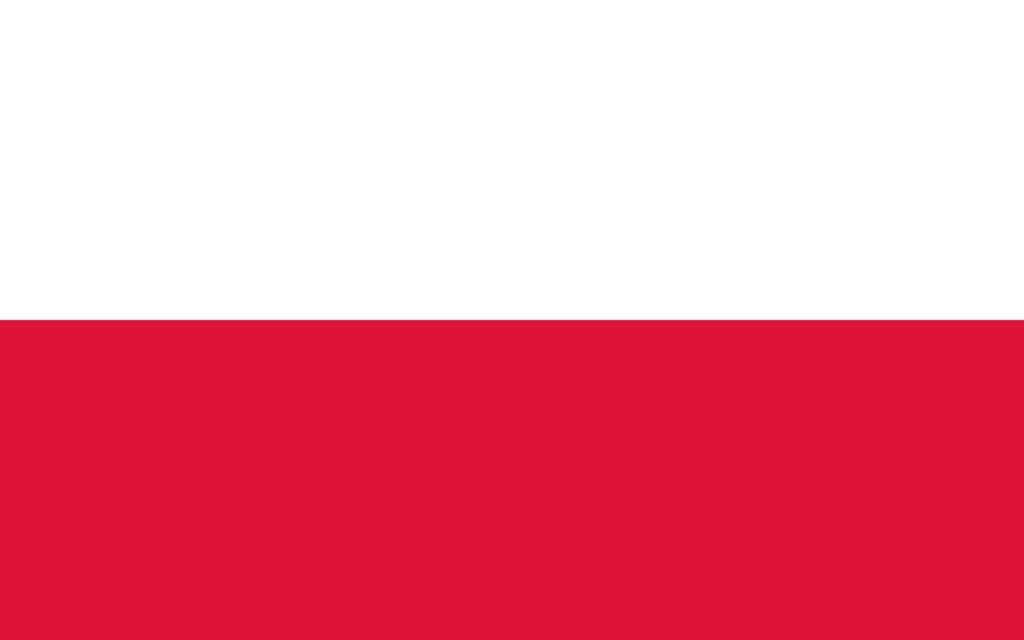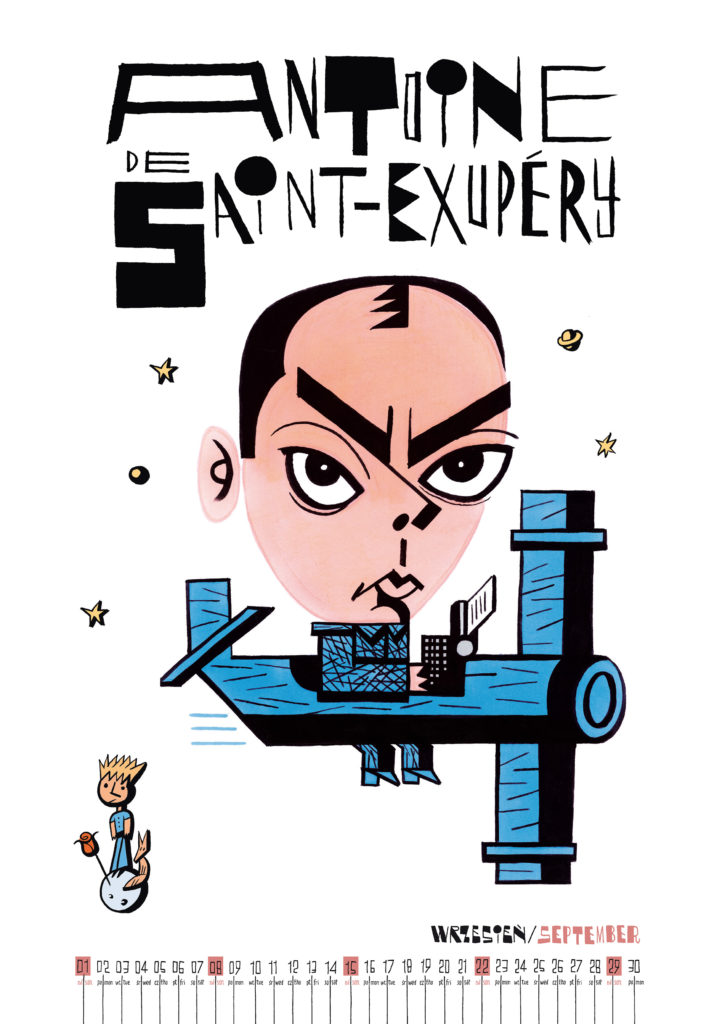Welcome to the celebrated promotion event.
Satyrykon Gallery in Legnica, Rynek 36, 7 December at 6 p.m.

This year, Satyrykon’s calendar was designed by Tomasz Broda. He created the calendar by the name of „Proust de la crème, or history of literature for webholics”
Tomasz Broda is draughtsman, illustrator, pedagogue, creator of puppets and masks made of every-day items. For Polish Television he executed his original show entitled Make Your Own Mouth. He has won eight awards of SATYRYKON International Exhibition – Legnica (including Grand Prix). He also won “Book of the Year 2008” Award from Polish Section of IBBY for his illustrations to Przygody przyrody [Adventures of Wild Creatures] by Zbigniew Machej. He runs the Illustration Studio at The Eugeniusz Geppert Academy of Art and Design in Wrocław. Since 2018 he has written and drawn a column in the ”Wprost” weekly.
Proust de la crème, or history of literature for webholics
I still have this particular sketchbook with some ideas drawn once on the train – famous writers and characters from their books: some scenes from War and Peace or Anna Karenina, and next to them, a little figure of Lev Tolstoy scribbled by me with his thumb put up. Slaying the userer with an axe – Dostoyevsky’s friends will like this, strangling Desdemona – hundreds of “likes” for Shakespeare. Marcel Proust takes a photo of a petite madeleine – a famous French cookie from In Search of Lost Time – and immediately adds the picture on Facebook. Franz Kafka has lots of friends in the world of insects (Gregor Samsa and others), and the proposals of various devilish tortures incite emotions on Dante’s fanpage. Writers from different periods invite each other to their profiles and comment each other’s works. And what if I turn all this into a book? History of literature in a network of social media where education meets playing, jokes are mixed up with serenity, and literary tendencies together with existential issues, are all translated into a language of artistic forms inspired by web culture of images. Worldwide known writers have their profiles here, with their portraits in the middle. Writers’ faces are a great feast for physiognomy examiners – almost every author is an original individual, a freak with his character expressed on the face. Andersen – an ugly man, a melancholic and a misogynist, a bundle of nerves, phobias and complexes; Thomas Mann – a buffoon with a Narcissistic personality, and a domestic terrorist; Proust – a sheepish guy living on a cup of coffee and one croissant daily; Gertrude Stein – she was just the one who was not able to write unless she saw cows on pastures somewhere near. This circle of people is a source of a never ending inspiration – a festival of hair-cuts, a masquerade of costumes, a duel of faces, gestures and glimpses. A black contour line draws silhouettes of persons of letters, and colourful surfaces filled their insides – their portraits prevail the compositions, they are surrounded by little icons of motifs selected from their oeuvres, inseparable attributes and accessories, little faces of their friends and favourite pets – various trifles and pictorial flashbacks which introduce new plots and contexts. Just
the Internet likewise – important contents is mixed with side topics and thus makes up pictorial-and-verbal narration which on the one hand is a parody of a current language of pop culture, while on the other hand makes use of it to popularise knowledge. Is it possible in our times that any of the nineteenth-century writers, authors of multivolume epics or literary experimentalists would achieve the level of number of clicks comparable to tabloids? “Cows Raped by Buffalos!” wins hands down The Magic Mountain, and “Black Pudding Determined to Kill Me!” attracts us far more than Madame Bovary.
History of Literature for Webholics tries to meet the challenge: literary classics versus web-pop-culture trash. Caricature, comics-like form and slightly humorous narration are a sort of package for a short, subjective summary of the world literature.
Tomasz Broda


